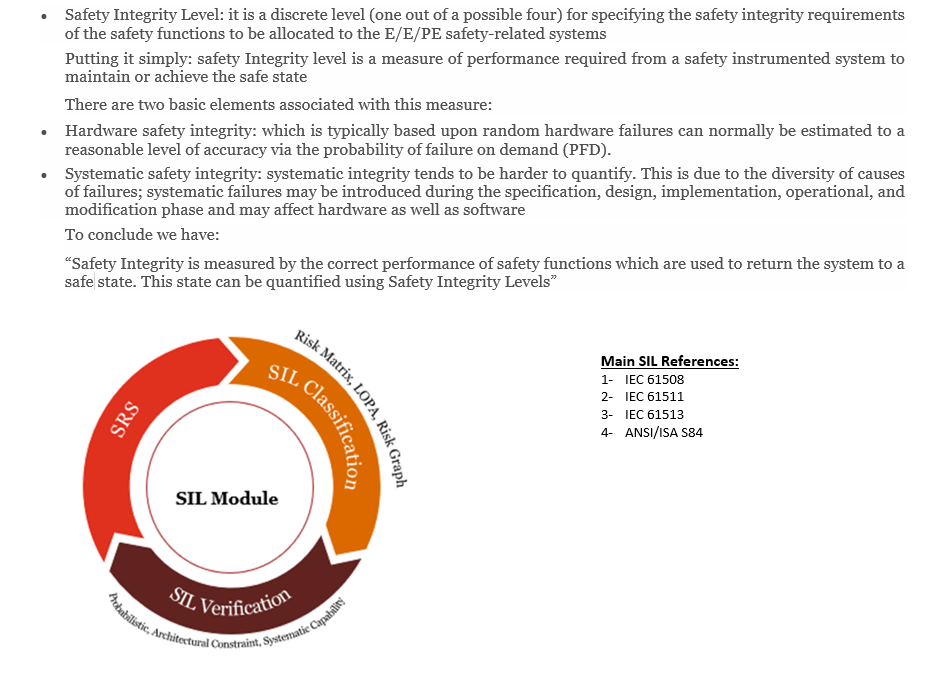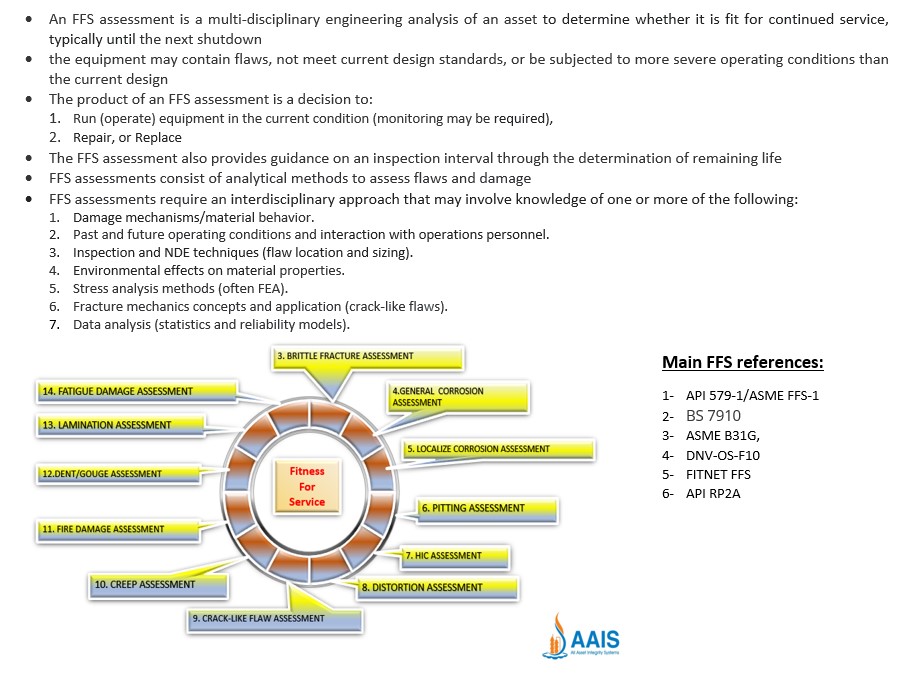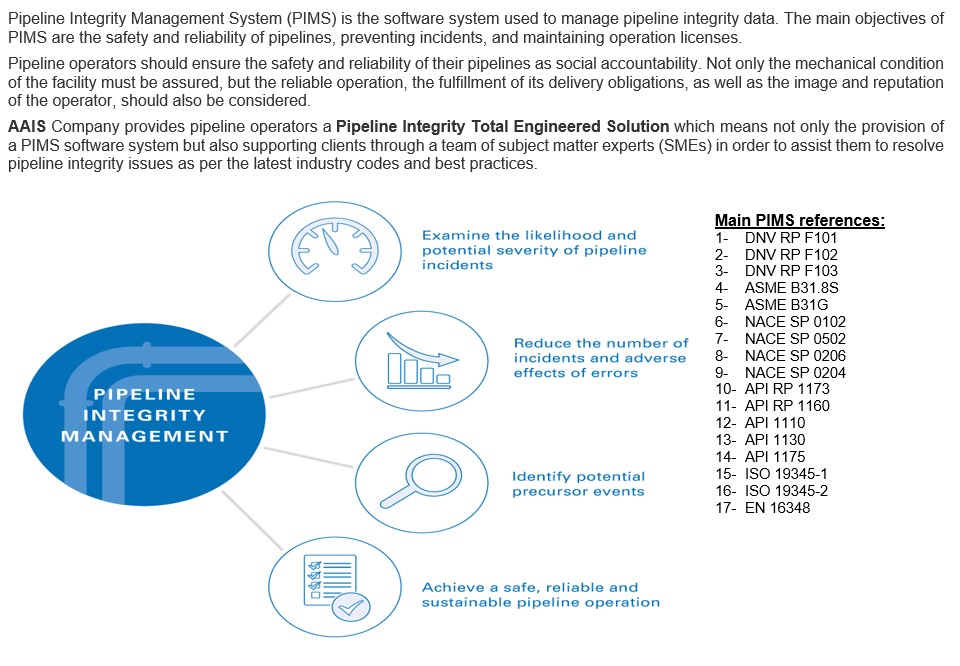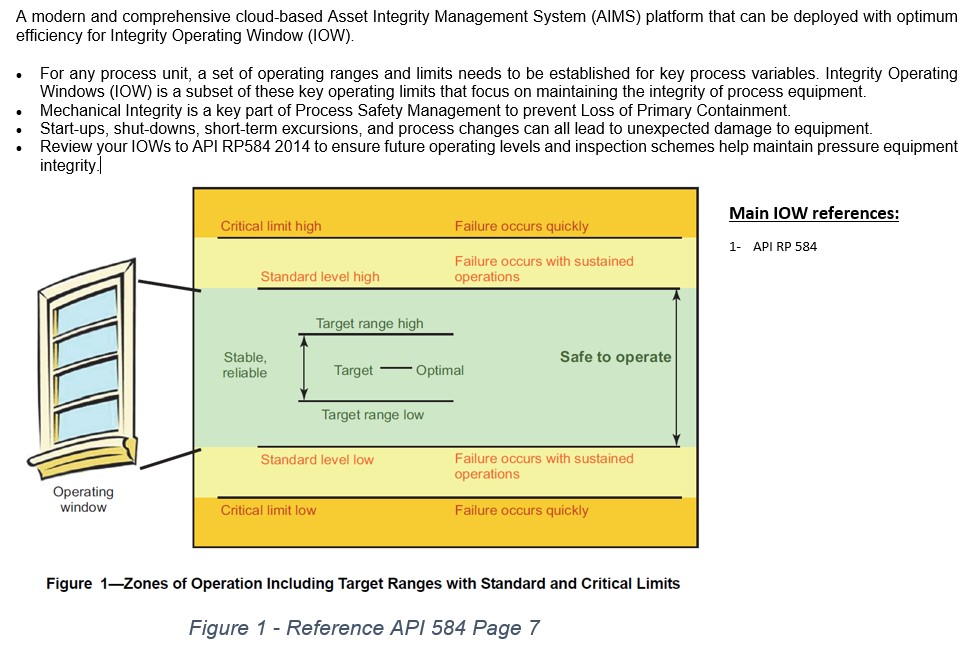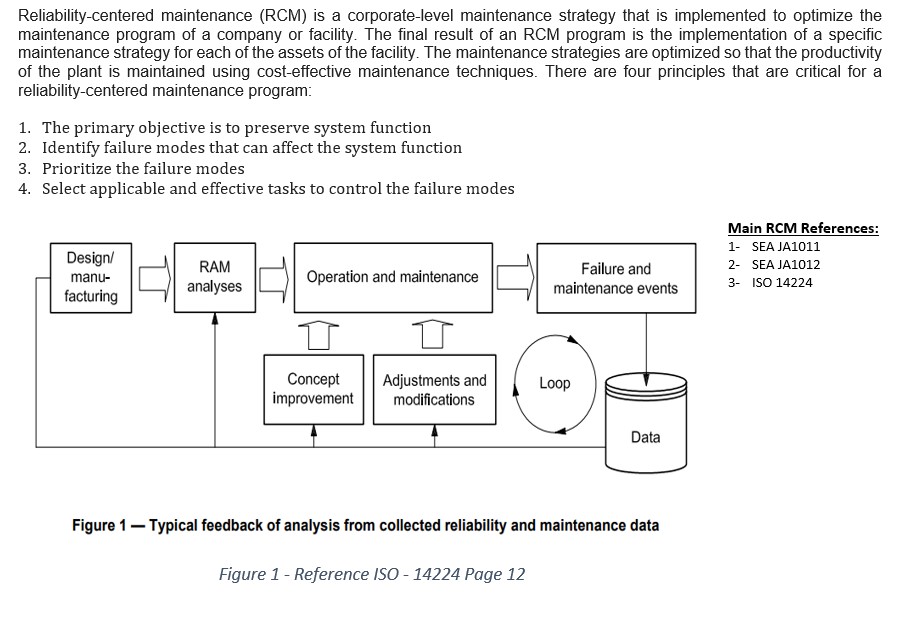Files
|
Type
|
Format
|
Title
|
Edition
|
Description
|
Author
|
Availability
|
Size
|
|---|---|---|---|---|---|---|---|
| S | application/pdf |
API 571 -Damage Mechanisms Affecting Fixed Equipment in the Refining Industry |
2020 |
This recommended practice discusses damage mechanisms applicable to oil refineries; however, much of the information herein can also be applied to petrochemical and other industrial applications, as the user deems appropriate |
API |
Upon Request |
8,308 KB |
| S | application/pdf |
API 579-1- ASME FFS-1 Fitness -for - Service |
2021 |
This Standard provides guidance for Conducting FFS assessments using methodologies specifically prepared for pressurized equipment the guidelines provided in this Standard can be used to make run-repair-replace decisions to help determine if components in pressurized equipment containing flaws that have been identified by inspection can continue to operate safely for some period of time. |
API |
Upon Request |
12,272 KB |
| S | application/pdf |
ASME B31.3-Process Piping |
2018 |
This Process Piping Code is a Section of The American Society of Mechanical Engineers Code for Pressure Piping, ASME B31, an American National Standard. It is published as a separate document for convenience of Code users. It is the intent of this Code to set forth engineering requirements deemed necessary for safe design and construction of piping installations |
ASME |
Upon Request |
6,481 KB |
| Paper | application/pdf |
Creep Life Simulation and Assessment of High Temperature Piping Systems and Components |
N/A |
This document discusses the simulation which is used to estimate the remaining life of the piping system, evaluate the adequacy of existing bellows and spring can supports and explore remediation options. |
Brian Rose and James Widrig |
Upon Request |
252 KB |
| Paper | application/pdf |
Developing a fitness for service approach for reduced toughness carbon steel piping, flanges and fittings |
2018 |
This article is an overview of the issue of reduced fitting toughness; the possible contributors to the problem; the measures that have been taken to date to address the issue; and an introduction of a proposed fitness-for service (FFS) approach to address the issue, specifically for components that are currently in-service. |
Kannan Subramanian, John Norris, Ralph E. King and Daniel Ayewah |
Upon Request |
211 KB |
| Paper | application/pdf |
Ductile Tearing Instability Analysis of Piping Bend with Surface Cracks |
N/A |
The objective of this paper is to evaluate a cracked piping bend, i.e. elbow, to determine the limiting critical crack sizes due to internal pressure and to compare these results to a straight pipe, i.e. cylinder |
G. Thorwald and E. Jensen |
Upon Request |
1,052 KB |
| Paper | application/pdf |
Evaluating Building and Plant Process Piping Systems for Corrosion, Pitting, and Remaining Service Life |
N/A |
This Paper details the evaluation of various damage mechanisms and remaining life service for process piping systems |
CORRVIEW |
Upon Request |
134 KB |
| GL | application/pdf |
Fitness for service guide - Section 1 Part A - Evaluation of Pressure Vessels, Piping, and Storage Tanks |
N/A |
This guide provides fitness for service assessment methodology applicable to existing pressure vessels, storage tanks and piping |
Exxon |
Upon Request |
4,707 KB |
| HB | application/pdf |
Fitness-for-Service and Integrity of Piping, Vessels and Tanks |
2005 |
This Book provides instruction on the latest ASME recommended practices for inspecting, evaluating, and monitoring pressure vessels and piping. This handy volume annotates and explains ASME code and API inspection and fitness-for-service practices. Presented in a clear, precise manner, this comprehensive guide meticulously explains how stress analysis, materials, engineering, and nondestructive inspection affect fitness-for-service |
George Antaki |
Upon Request |
35,817 KB |
| GL | application/pdf |
Guidelines on Pipe wall Thinning |
2008 |
This Document discusses guidelines on Thickness Reduction (wall thinning) due to flow accelerated corrosion of shipboard piping |
ClassNK |
Upon Request |
101 KB |
| HB | application/pdf |
Introduction to Finite Elements in Engineering |
2002 |
Thoroughly updated with improved pedagogy, this edition of this classic textbook continues to provide a clear and comprehensive introduction the fundamentals of the finite element method. New features include enhanced coverage of introductory topics in the context of simple 1D problems, providing a solid base from which to advance to 2D and 3D problems; expanded coverage of more advanced concepts, to reinforce the reader's understanding |
Tirupathi R. Chandrupatla and Ashok D. Belegundu |
Upon Request |
4,249 KB |
| Paper | application/pdf |
Observations on flaw Tolerance and brittle Fracture - The Effect of Post weld Heat Treatment |
2018 |
This article summarizes aspects of recently published Reference [2], where a rigorous approach to generate impact test exemption curves and to determine appropriate Charpy impact test temperatures by establishing separate as welded and PWHT curves is presented. This approach permits direct comparison of flaw tolerance for as-welded and PWHT components using the Fracture Toughness Master Curve (Master Curve) |
Phillip E. Prueter |
Upon Request |
252 KB |
| HB | application/pdf |
Piping and Pipeline Assessment Guide |
2006 |
The book is a fitness-for-service guide with emphasis on remediation of piping and pipelines containing flaws |
A. Keith Escoe |
Upon Request |
4,673 KB |



